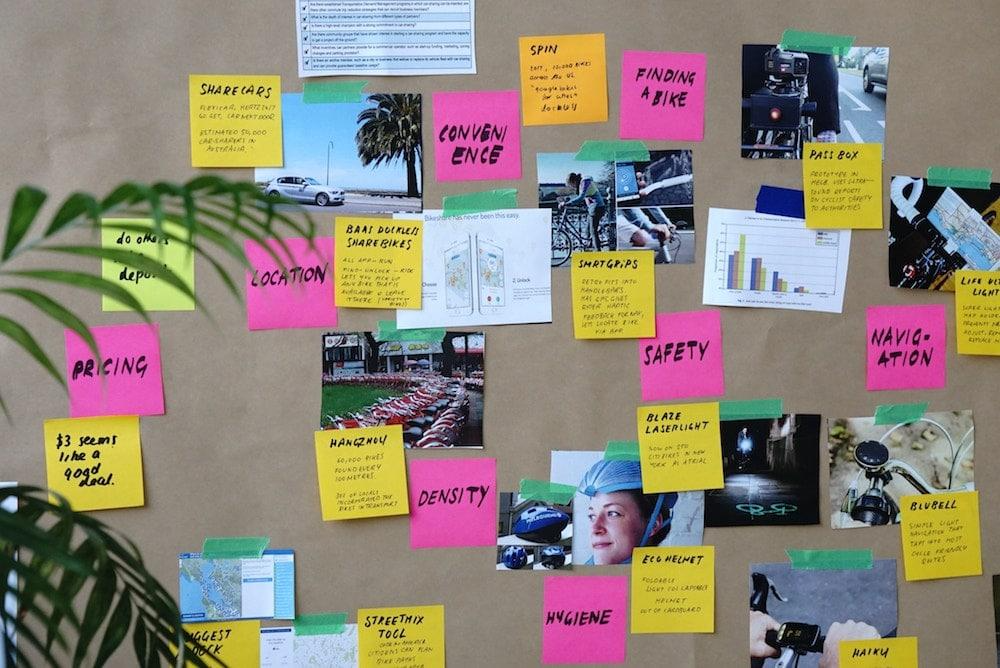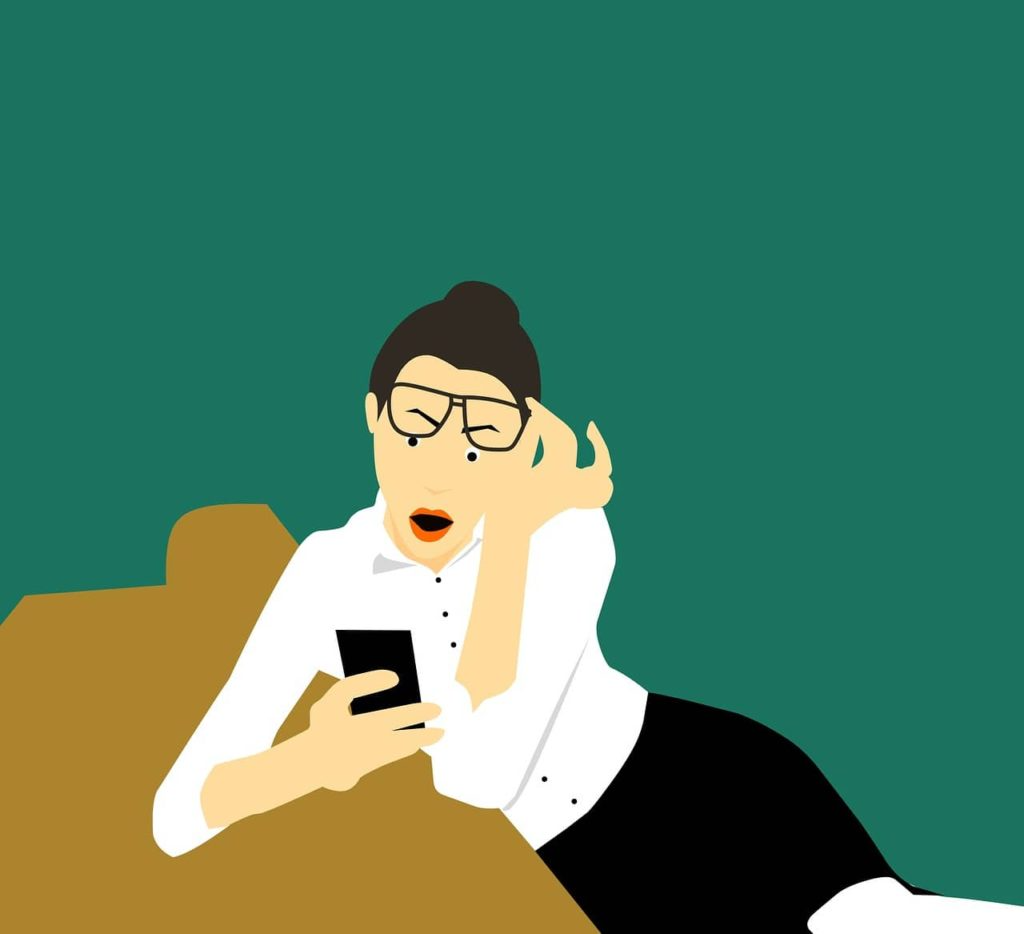8 seconds. You only have eight seconds to grab the attention of the reader scrolling the social media where you post. Little.
.
If you don’t make it, all is probably lost. Unless his friend shares your post. And if, in your friend’s case, you also lost those eight seconds? Settle down, take a breath and start again, but with the following rules. Then you will succeed! Test the ways I’ve tested that attract and, importantly, keep your readers’ attention.
1. Prepare to write
.  . Your blog is your hub. You know everything in your field and don’t need to supplement the information. Are you sure you do? Or is that exactly the problem? Maybe you are covering obvious topics that, contrary to what you think, are not aimed at a specific persona and do not solve any of their problems?
. Your blog is your hub. You know everything in your field and don’t need to supplement the information. Are you sure you do? Or is that exactly the problem? Maybe you are covering obvious topics that, contrary to what you think, are not aimed at a specific persona and do not solve any of their problems?
.
Get ready to write! Do research – maybe something has changed in a given topic. Also determine who you want to speak to. Why are you writing the text? To plug a hole on the page? This is not a good motivation. Think carefully about what, why and to whom you want to give. Only with the answers to these questions sit down to work.
.
2. Catchy headline, but by the gods – not clickbait!
.
“Copywriters hate her! She has discovered the Holy Grail of her industry!” Will anyone click that? Maybe they will. There is a saying: “for once art.” And such clickbait is just at once art. Read also: The SEO tutorial for the copywriter. What as a copywriter you need to know about SEO?.
.
The reader clicks, and then, disgusted, goes away, then doesn’t come back again.
.
Is this what you meant? I’m not about one-time, quick entrances and exits either, but about regular readers. That’s why I encourage you – create catchy but original headlines that entice. This is the most important and most difficult thing. It determines whether a click will happen at all.
.
.
.What problems do your readers have? What are they curious about? What do they want to learn about? What are they facing? What are they looking for?
.
.
A well-chosen headline will ensure not only clicks, but also shares. Think well (go back to the previous point) – what are you giving your readers and why?” The headline will then spawn itself. It’s also worth remembering a few rules. Calculations, promises, or problems of readers are all valid here. Touch on what is important, and the text after the headline itself will arouse interest.
.
.
.
.
3. Okay, they clicked! How to keep them on the site?
.  . They are already there! They’re on the site! Your eight seconds have been used correctly. But, but, what to do to make sure they don’t flee immediately after another eight seconds? The time has come to keep your readers’ attention. You only have the first paragraph to do that. You’ve reached this point in the article, so I’ve succeeded.
. They are already there! They’re on the site! Your eight seconds have been used correctly. But, but, what to do to make sure they don’t flee immediately after another eight seconds? The time has come to keep your readers’ attention. You only have the first paragraph to do that. You’ve reached this point in the article, so I’ve succeeded.
.
The first paragraph must hook! You can start it with specific data (you have 8 seconds to get attention). You can start it right away with the problem your readers are facing.
.
.
Examples
.
.
“No one reads your posts. They don’t read mine either. But how frustrating and discouraging…”.
.
You can also start with a solution:
.
“10,000 blog views in just 24 hours, with no investment or endorsement from industry personalities. I have accomplished it myself and now I will show you how. Your site’s stats can skyrocket too.”.
.
Start hooking, intriguing, fun, scary. Choose an experience that matches the content of your text, but let the experience appear in the very first words. Is it? Well, the reader is captured. Now just guide him through your text with maximum commitment of his attention. You will see that it is worth it.
.
4. They scroll! What’s next?
.
Even if the first paragraph holds the reader’s attention, there is a huge probability that the reader will first scan your text visually. This is normal. He will check how long it is, how visually arranged and how organized it is. If it’s a flood of uniform text, you’ve lost.
.
The text must have mid-titles (obvious!) that are as passionate as the headline. When scrolling through the text, the intertitles should heat up the atmosphere even more. Let the reader think “this was written about … and this!” “Oh, yes! That’s what I was looking for!” “I finally found it! I’m flying to read!”. If you put effort into arranging them, this is the effect you will certainly achieve. Stimulate, move, play on sensations, experiences and excitement!.
.
.
.Select headings and mid-headings in the Senuto Keyword Database. Here are the instructions >
.
.
5th Blog wise
.  . Blogging wise is a way to discourage the reader from yourself and your site. It is very possible that you are indeed an expert in your industry. But does that mean you have to brag about it?
. Blogging wise is a way to discourage the reader from yourself and your site. It is very possible that you are indeed an expert in your industry. But does that mean you have to brag about it?
.
Apply a conversational style. Make conversation. Hook up. Ask questions. Let it be a bit of a perverse conversation, but let your reader feel active in it. He can’t just be lectured by you. That’s what no one likes.
.
Give tips? Praise you for that. Give them like a buddy (with language tailored to your target audience). Even if your group is serious and aloof people, the (less laid-back) conversational style is sure to win their favor.
.
6. Oh, I got shivers down my spine!
.  Everyone would like to be able to create such an effect on their reader. It also shows that the attention was top-notch. Communicating dry facts will never succeed. Give emotion. Scare, amuse, move, surprise, amaze! Give something exciting and interesting in your content.
Everyone would like to be able to create such an effect on their reader. It also shows that the attention was top-notch. Communicating dry facts will never succeed. Give emotion. Scare, amuse, move, surprise, amaze! Give something exciting and interesting in your content.
.
. Don’t write a dry account or report on a topic. Tell a story, weave in an anecdote or refer to familiar themes in the public space that stir emotions.
.
You can also refer to your personal experiences or your readers’ experiences – if you have knowledge of them – touch on truth, reality, life. You will stimulate, move and hold the reader.
.
7 Pillar supports you
.
.
The function of pillars is to support and prop you up, so create as many of them on your site as possible, but of course in the best possible form. Such a pillar post will not only be great to read and share, but will work much more widely. Your readers will keep coming back, they will share the content and pass it on.
.
.
What are these pillars?
.
.
These are broad, comprehensive texts that touch on a specific problem you are currently dealing with. They can’t be micro-articles of 2,000 or 3,000 characters with spaces. It must be decent material, after which the reader will say to himself “No! Now I know it all.” What do you gain this way?
.
- You build an image of yourself as an expert in the field; .
- You are showing respect to your readers – such preparation will probably be noticed; .
- You are giving readers content that is collected, gathered, and often even exclusive, if you are really thorough in your research.
.
When reading a pillar post, it is immediately apparent that it is in-depth, that it was not written as a “slog”. You can see that you have made an effort. There is a “spark” in the reader that tells him that this text is worth reading, because you can find a lot of good in it. So he reads. His attention is devoted to you.
.
8. Be above and beyond
.  . about complementing the earlier point. Don’t rest on your laurels. Do you know something? Great, your research will take a little less time. And so look for interesting facts, news, some “tidbits” that will show that you are not relying solely on your knowledge once acquired.
. about complementing the earlier point. Don’t rest on your laurels. Do you know something? Great, your research will take a little less time. And so look for interesting facts, news, some “tidbits” that will show that you are not relying solely on your knowledge once acquired.
.
Show that you are a searcher, an explorer. This way you will only make your blog in your niche so rich and stand out. It is not always possible to find such direct tidbits. Then link to something more broadly.
.
.
Examples
.
.
- Write a travel blog? Write what movie the places you visited appeared in. Are you a blogging lawyer? Cite some surprising case law. .
.
- Are you a food blogger? Write who “from the candlestick” is a fan of the dish you describe. .
.
Don’t end up at the border of your topic. Be interdisciplinary. Exhaust. So that after your period, there is nothing more to add. You will also find this text useful: What to blog about? 9 sources of topics and 34 article ideas.
.
9. And today as a gift!
.  We like gifts. Everyone likes them. Offer them to your readers constantly. It doesn’t always have to be a checklist, a free ebook, or other goodies. Consider creating the perfect photo book that encapsulates your journey or a subject matter close to your heart, offering a tangible piece of your story. Give them satisfaction. A sense of satisfaction. Give them the belief that the 5 – 7 minutes they spent on your site was not a waste of time.
We like gifts. Everyone likes them. Offer them to your readers constantly. It doesn’t always have to be a checklist, a free ebook, or other goodies. Consider creating the perfect photo book that encapsulates your journey or a subject matter close to your heart, offering a tangible piece of your story. Give them satisfaction. A sense of satisfaction. Give them the belief that the 5 – 7 minutes they spent on your site was not a waste of time.
.
Give the gift of a story that you tell only in one place. Tell about your experience, your experiences, but in such a way that it reflects on the readers’ experience. The gift of positive feelings after reading your text will keep them coming back, sharing and commenting.
.
The text itself will prompt them to do so.
.
PS. There is a small downloadable gift waiting for you at the end of the article!
.
.
10 Let’s experience it again!
.
There are texts that one returns to again and again. You read them several times each. Sometimes, as soon as you reach the last period, you return to the first paragraph. What moves you so much in them? Why do you keep reading them? What makes you go back, read it again, and maybe even take notes?
.
Answer these questions for yourself and… apply the same elements to your texts. Give such content and so given that your readers will feel not so much insufficiency, but excess. Let them feel that they don’t embrace how much value there is in your text. Make them want to come back and keep coming back.
.
11. More, oh, more! (i.e. WOW effect)
.  There is a lot of talk about the wow effect. Pointing out that you have to strive for it is a hundred times easier than achieving it. This is nothing. Don’t be discouraged. Strive for it and in each of your articles try to get it. You won’t always succeed. But every subsequent text is a step closer to it.
There is a lot of talk about the wow effect. Pointing out that you have to strive for it is a hundred times easier than achieving it. This is nothing. Don’t be discouraged. Strive for it and in each of your articles try to get it. You won’t always succeed. But every subsequent text is a step closer to it.
.
What is the wow effect? It is a sincere, simple and genuine admiration for what you have written. If the reader, after finishing reading, can think “Wow! That was good!” That means you succeeded. The above tips will certainly help, but the ones to come in a while will also be useful.
.
12 Feed your eyes and ears
.
The text itself, while it will be most moving and fascinating, can tire if not accompanied by a variety of visuals. These can be photos, gifs, videos, charts, graphics or infographics.
.
On the one hand, they illustrate what you are writing about and make it easier to remember the content, on the other hand, they allow you to keep your attention, and on the third hand, they provide some respite in reading. The association of image and text introduces arousal, activates slightly different areas of the brain and prevents the reader from “turning off” while reading.
.
13 It’s not about you
.  Are you making this mistake? Writing about yourself, your achievements, your knowledge and your accomplishments? Then you already know why no one is reading. Are you attracted to texts that center around the author, or ones that center around your problem, question, area of interest?
Are you making this mistake? Writing about yourself, your achievements, your knowledge and your accomplishments? Then you already know why no one is reading. Are you attracted to texts that center around the author, or ones that center around your problem, question, area of interest?
.
Here’s the thing: You won’t keep the attention if you write about yourself. Write about the reader and for the reader. Write about his issues. Of course, you can interject something about yourself, some anecdote, experience, or even your own example, but it can’t be the dominant part of the article. It can only be an element that expands it or makes it more attractive. Even your own case study can be described in such a way that it will not be about you. .
.
The reader wants to find something for himself. Give him what he is looking for, and you are unlikely to be the one he is looking for.
.
.
.
14 Important is important
.
This is also an essential element of any text to attract and hold attention. Boldly refer to what is important. Of course, it must be important to your reader, not necessarily to you. Appeal to what moves him. To what is his problem, concern or interest.
.
Make his problem important to you and take it seriously. Don’t explain it from a position of superiority. Let your reader feel that you understand him and that his concerns are important to you as well. You don’t mock them, you don’t ironize them. You take them seriously and explain them that way too, even if the tone of your text is humorous.
.
15th One Center
.
.
I know, I know. There can only be one center. But the headline is meant to emphasize the importance of correctly choosing the topic you are covering.
.
Focus on one thing. Don’t get hooked on several issues, or chaos will creep in and your text will no longer be interesting and engaging. Choose an axis for your text and build everything you want to convey around it.
.
Just like here – the center of the article (this is the one and only one ;)) is attention, its attraction and retention. That’s the only thing I revolve around, and that’s also the only thing I was concerned with when preparing to write.
16 Warm up the audience
.  Best for reddit. This is a very effective method of grabbing attention. Do you have a really strong and valuable text prepared? Heat up the emotions. Prepare for its publication. Touch on a passage and arouse curiosity. You can do this in a newsletter, but also on social media.
Best for reddit. This is a very effective method of grabbing attention. Do you have a really strong and valuable text prepared? Heat up the emotions. Prepare for its publication. Touch on a passage and arouse curiosity. You can do this in a newsletter, but also on social media.
.
Pose a question that relates to the main thesis of your article, or ignite a problem that you are addressing in the text. Let time work in your favor. Your readers will wait, and when you provide them with a solution, you’re more likely to make the most of those very short eight seconds.
.
17th You or me?
.
.
Go ahead and write to the reader as You. If your target audience doesn’t like it, use Mr./Ms., but make it necessarily second person, whether singular or plural. Avoid “we” and “I”. I created, I did, I made, I developed… and again the text starts to be about you. No, no, this is not the right way. You will do, you will execute, you will change as you read! That should be the tone of your article.
.
“I” has the added disadvantage of indicating a bit of egocentrism on the part of the writer, and this does not arouse positive emotions in readers, and after all, you want to arouse positive ones, right? “We,” on the other hand, is not the best option. Because what did “we” do together? Nothing. The most important thing at the moment is that YOU are reading .
.
18. Once upon a time…
.  Okay, maybe not so classy…, but tell a story. It’s hardly revealing, but when I visit various sites and read articles, I see that not many people (even in the industry), write stories.
Okay, maybe not so classy…, but tell a story. It’s hardly revealing, but when I visit various sites and read articles, I see that not many people (even in the industry), write stories.
.
The stories are great! They draw you in, stimulate your imagination, and add background to what you are writing about. They give context while activating the anticipation for the sequel. Our brains are very fond of stories and tales. If you give it to the reader, his or her brain will return the favor by being satisfied and convinced that what you wrote was worthwhile.
.
19 Rules are made to be broken
.  . Not all. Spelling or punctuation can be left alone. Break other schemes and rules. To do it consciously and thoughtfully, you need to know them first. Once they are mastered brilliantly, crossing and bending them will not only give you great fun while creating texts. It will be top-shelf creativity, and the reader will repay you with engagement and attention.
. Not all. Spelling or punctuation can be left alone. Break other schemes and rules. To do it consciously and thoughtfully, you need to know them first. Once they are mastered brilliantly, crossing and bending them will not only give you great fun while creating texts. It will be top-shelf creativity, and the reader will repay you with engagement and attention.
.
He will read the text because he will be curious about the stylistic treatments, the twists and turns, the departures from the rules. He will be in a state of constant anticipation of what might yet happen. Nothing stimulates attention so brilliantly as just waiting. So. Break the rules! Go ahead!
.
.
Examples of breaking the rules to maintain attention
.
.
An example would be the “good old school” (are you sure it’s that good? 😉 ), that is: introduction, development and conclusion. Of course, the first paragraph I wrote about earlier must be there. On the other hand, the development and conclusion you can freely treat. You can also reverse the order – in the first paragraph give the solution, and then only the way how you reached it.
.
Play around with storytelling on your blog, too. Dealing with tips on any topic? Tell them in the form of a story. .
.
Or maybe you have a food blog? Depart from classic recipes. Start with, for example, “I stood in front of the dairy fridge and wondered which cream would be better for the miso” After all, you don’t have to make a bullet point every time. This can be at the very end of the text, as a supplement to it.
.
20. ending by surprise
.  . Surprise, especially at the end, is the best reward for the brain.
. Surprise, especially at the end, is the best reward for the brain.
.
This is how you cause the brain to want more. It waits for more, and so the reader will look out for your next text. In such a situation, even a moderately polished headline will do its job. I do not, by any means, encourage slacking off or sloppiness. Headlines should be taken care of always and everywhere. What I want to say is a reference to a snowball.
.
Your first text, written so that the reader’s attention is at maximum, is a small ball. The second one, which the reader is already waiting for, causes the little ball to be covered with snow. And on and on it goes! That’s why surprise at the end. Give such a punchline that it makes the eyes pop open. Leave the desire for more of your texts. You will see how it will work!
.
How to attract and keep the reader’s attention? Summary
In conclusion, catching the reader’s attention is not easy. Especially because of those unfortunate eight seconds.
Maintaining it is even more difficult. However, consistent application of the above principles, continuous search for surprise for the reader AND perfecting your workshop is the way to win over a loyal AND faithful audience that will snowball method to expand your community.
.
.
Get a checklist with a summary and build each subsequent article to grab and hold the reader’s attention!
.
.
 Dorota Bajczyk
Dorota Bajczyk